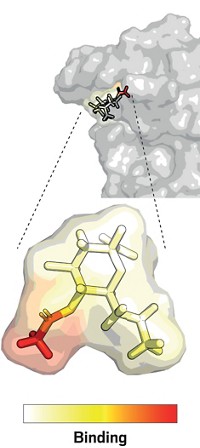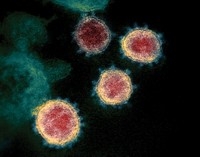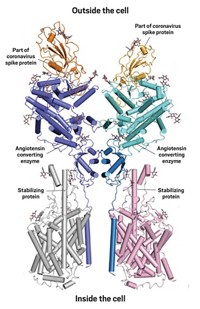Advertisement
Grab your lab coat. Let's get started
Welcome!
Welcome!
Create an account below to get 6 C&EN articles per month, receive newsletters and more - all free.
It seems this is your first time logging in online. Please enter the following information to continue.
As an ACS member you automatically get access to this site. All we need is few more details to create your reading experience.
Not you? Sign in with a different account.
Not you? Sign in with a different account.
ERROR 1
ERROR 1
ERROR 2
ERROR 2
ERROR 2
ERROR 2
ERROR 2
Password and Confirm password must match.
If you have an ACS member number, please enter it here so we can link this account to your membership. (optional)
ERROR 2
ACS values your privacy. By submitting your information, you are gaining access to C&EN and subscribing to our weekly newsletter. We use the information you provide to make your reading experience better, and we will never sell your data to third party members.
Materials
A Better View Of HIV’s Spikes
Structural Biology: Teams uncover detailed structure, dynamics of virus’s protruding proteins
by Celia Henry Arnaud
October 9, 2014
| A version of this story appeared in
Volume 92, Issue 41

The surface of HIV is studded with protein structures that help it penetrate healthy cells. A detailed understanding of these so-called envelope spikes could help scientists develop vaccines, because they are the only part of the virus that can be accessed by the immune system’s antibodies. Now, in two related studies, overlapping groups of researchers report the structure of HIV’s envelope spikes at near-atomic resolution and their conformational dynamics.
In one study, Peter D. Kwong of the National Institute of Allergy & Infectious Diseases and coworkers report a 3.5-Å-resolution crystal structure of an HIV envelope spike in its unbound, or “closed,” state (Nature 2014, DOI: 10.1038/nature13808). The envelope spike consists of three copies each of the glycoproteins gp120 and gp41. This structure is the first with enough resolution to see the entire outer portion of gp41.
To obtain the structure, the researchers captured the spike in its closed conformation with broadly neutralizing antibodies. The structure reveals that gp41 wraps itself around the amino- and carboxy-terminal strands of gp120 and pins itself in place. The spike undergoes significant rearrangement during fusion with a healthy cell’s membrane.
In the other study, Walther Mothes of Yale University School of Medicine and coworkers use single-molecule fluorescence resonance energy transfer (FRET) to determine the motions of HIV’s envelope spikes (Science 2014, DOI: 10.1126/science.1254426). The FRET measurements suggest that unbound envelope spikes shift rapidly between three conformational states. The dominant state is the closed form seen in the crystal structure. The other two states are ones that the spike adopts as it activates to enter a cell.
The structural study “greatly improves our understanding of the conformational changes that are likely to occur with HIV entry,” says Sriram Subramaniam, a biophysicist at the National Cancer Institute who studies HIV entry and spike structure. “The work on dynamics of intact virions provides a broader context to understand the flexibility of HIV envelope glycoproteins.”
“We show that these very potent, broadly neutralizing antibodies stabilize the closed conformation,” Mothes says. “Any vaccine design should involve stable scaffolds that mimic the closed conformation in order to elicit antibodies that can recognize it.”





Join the conversation
Contact the reporter
Submit a Letter to the Editor for publication
Engage with us on Twitter